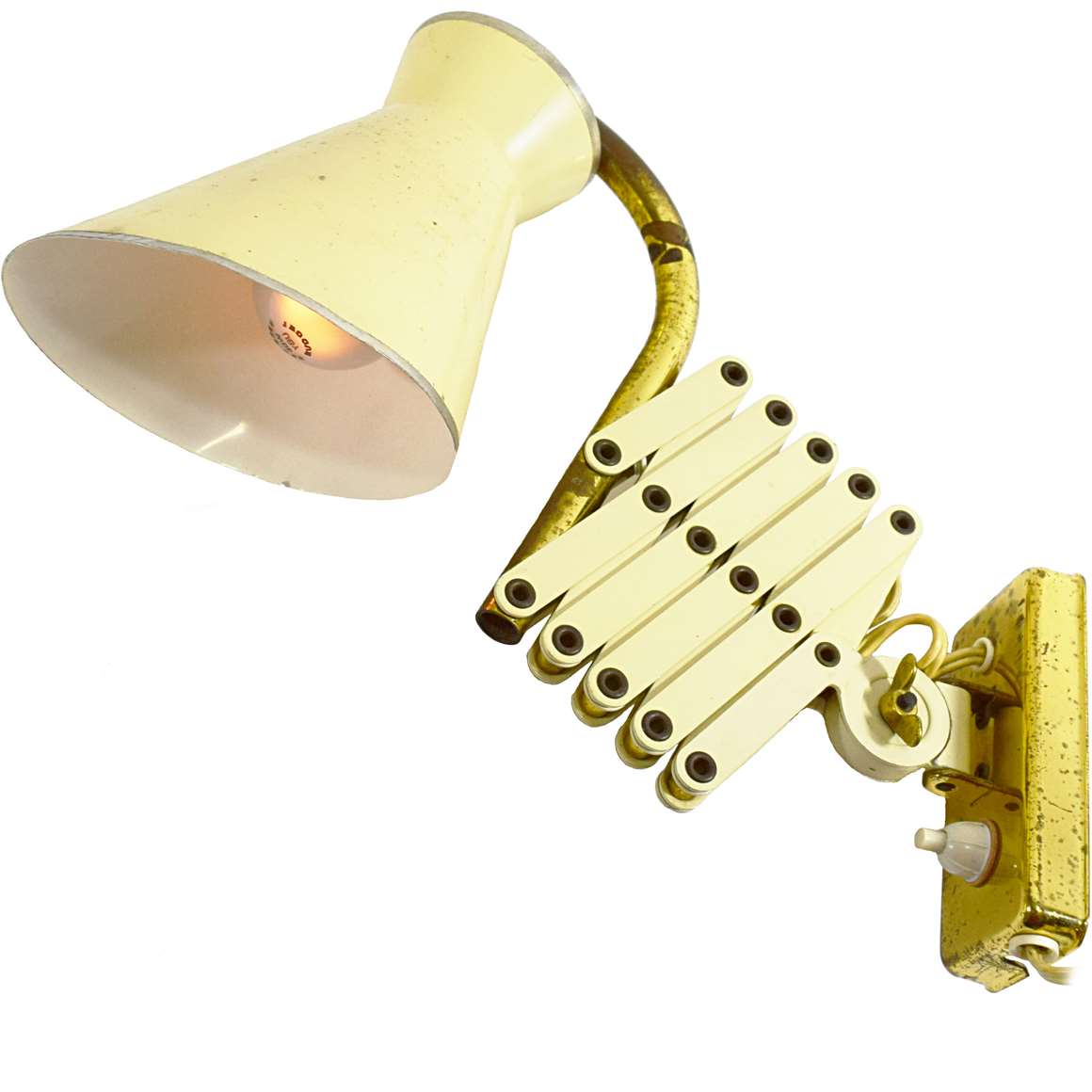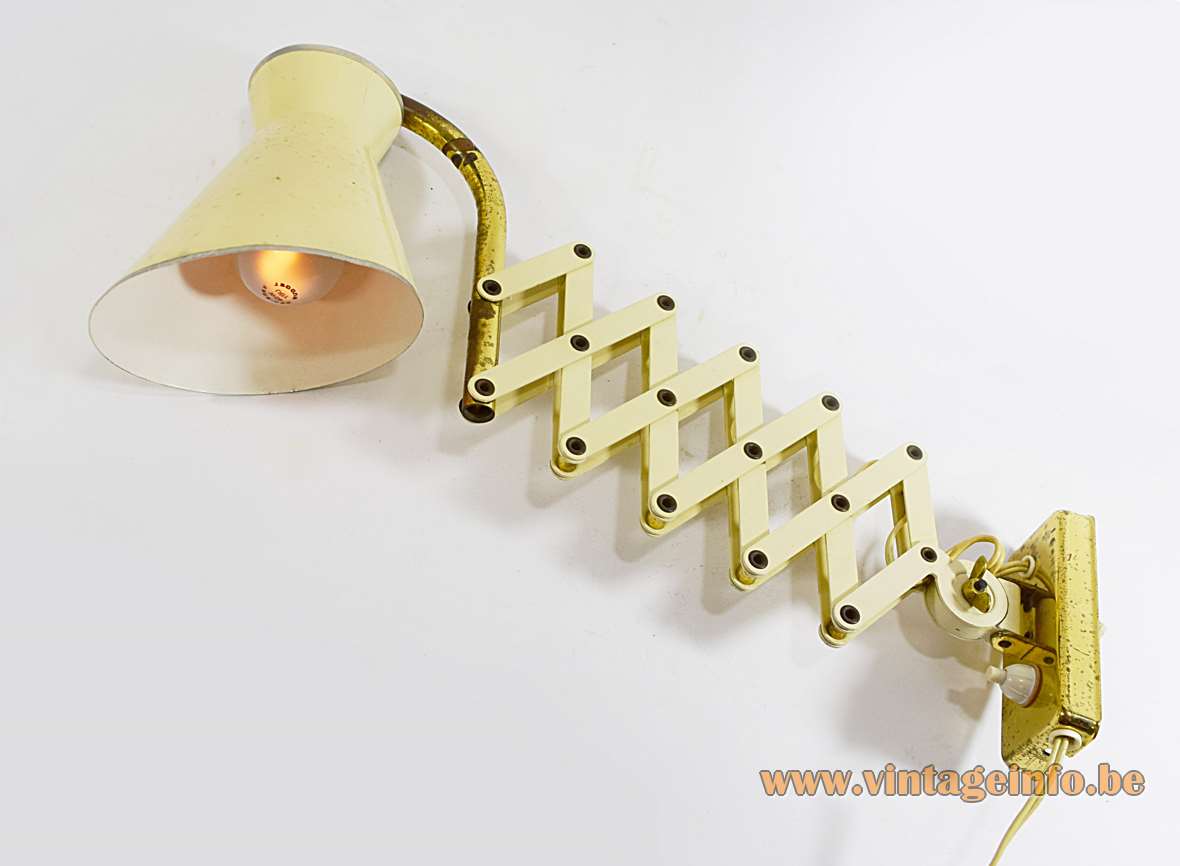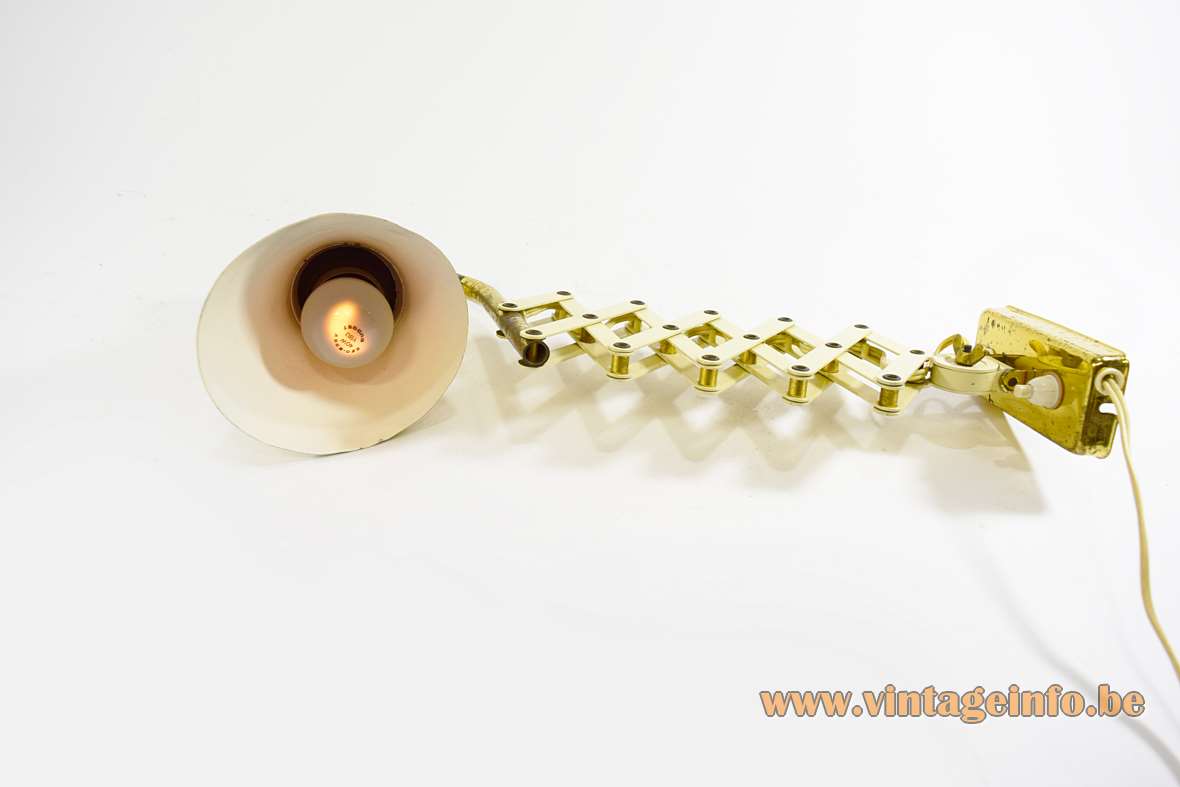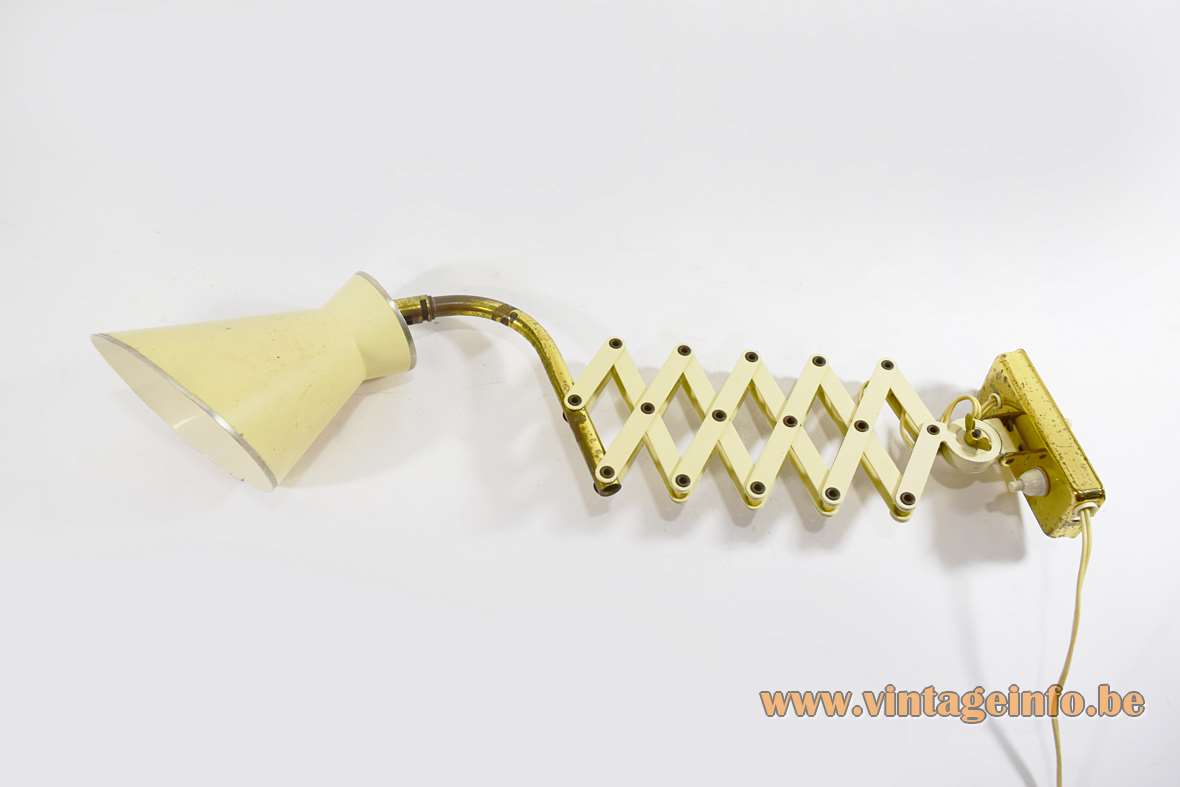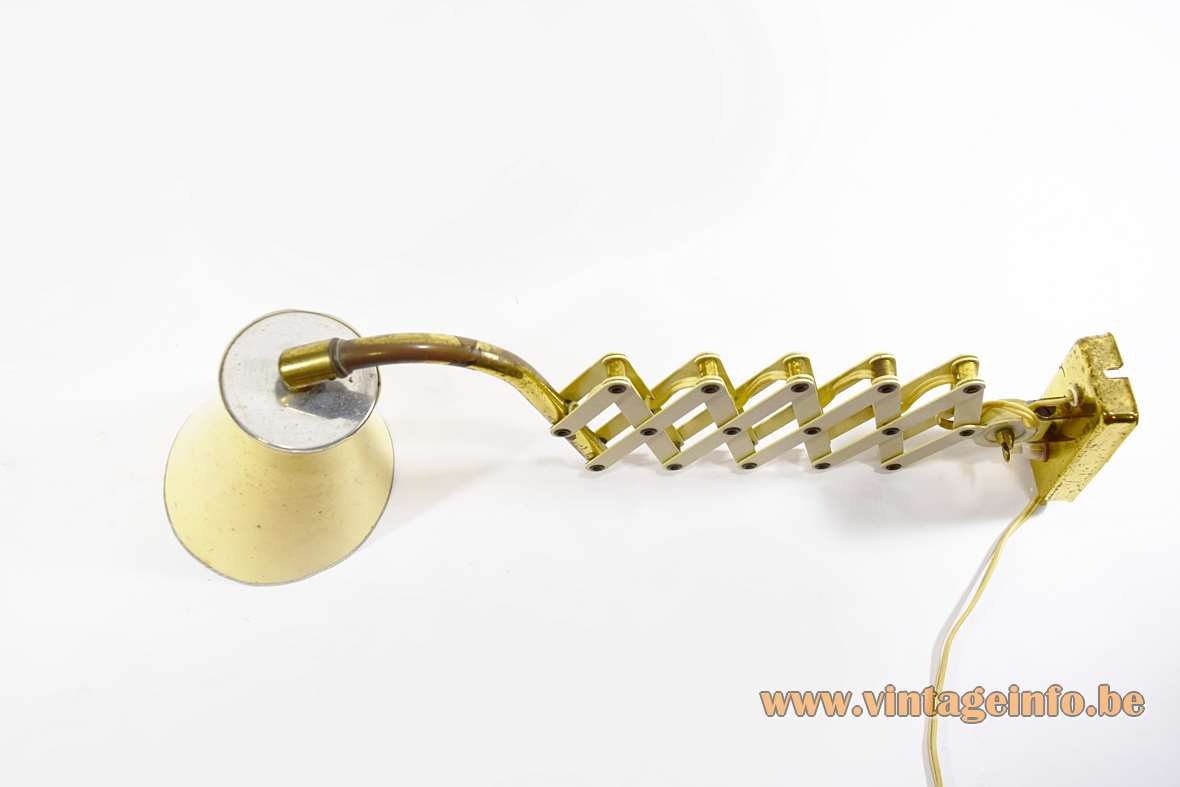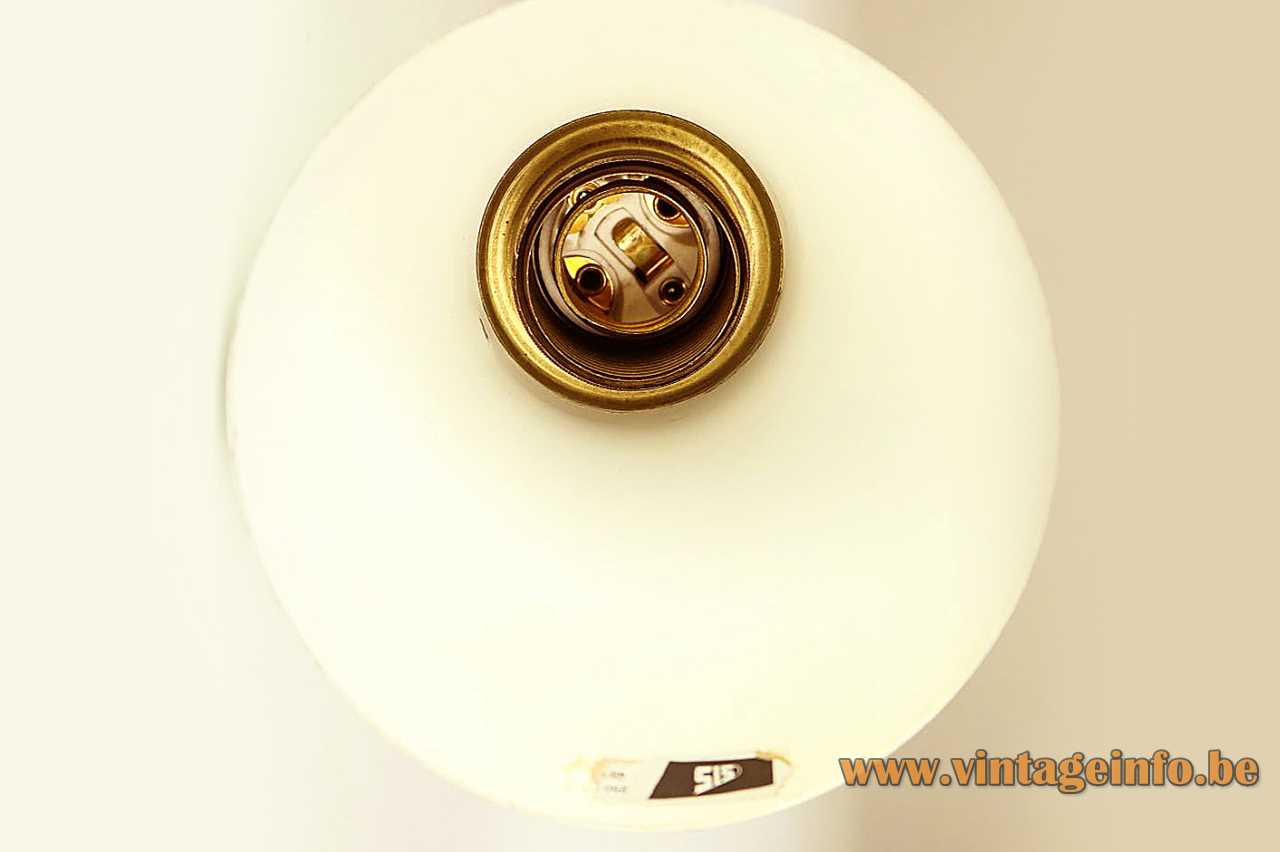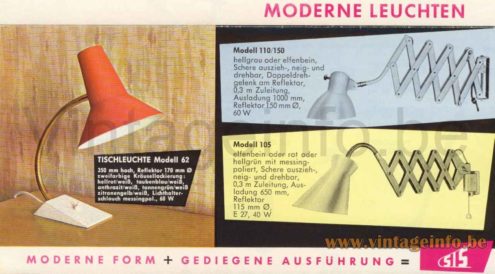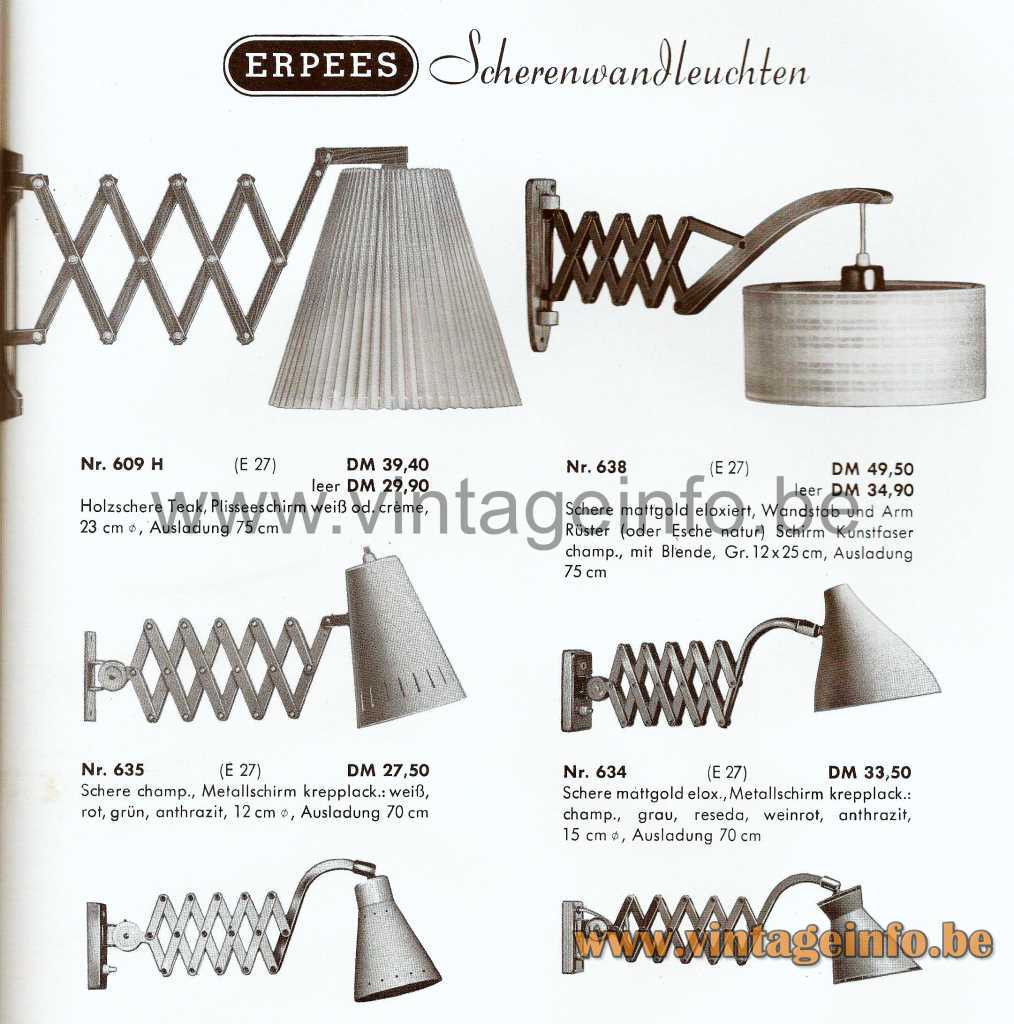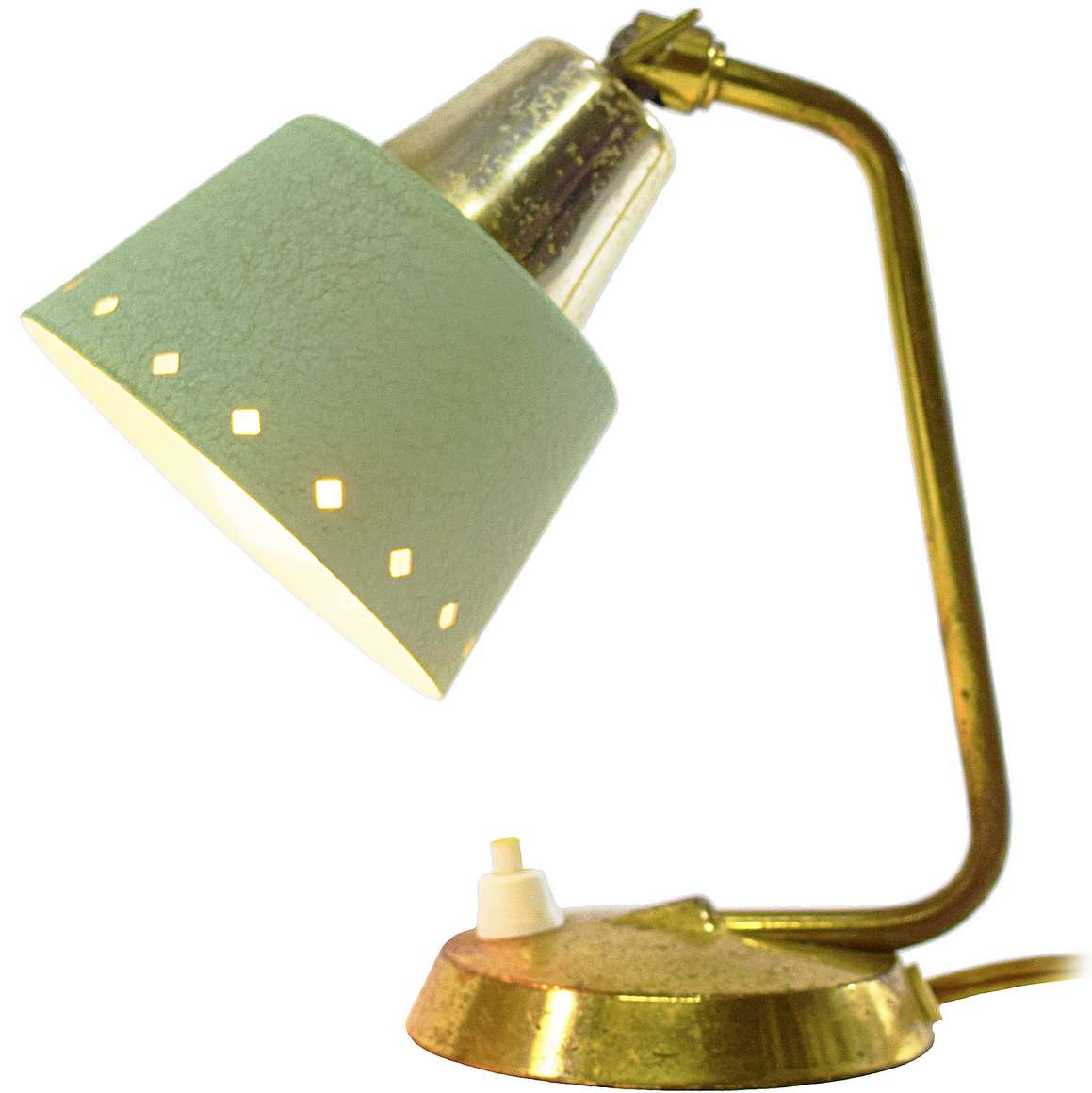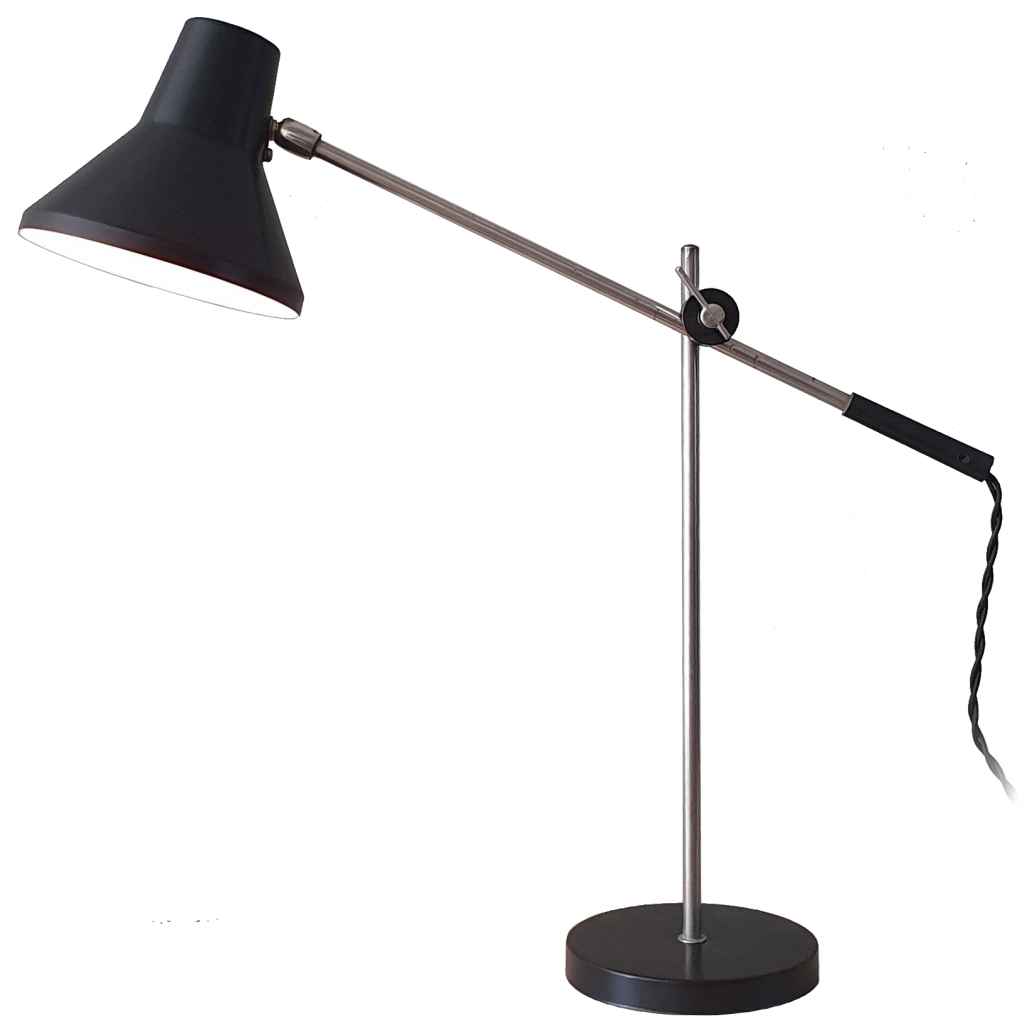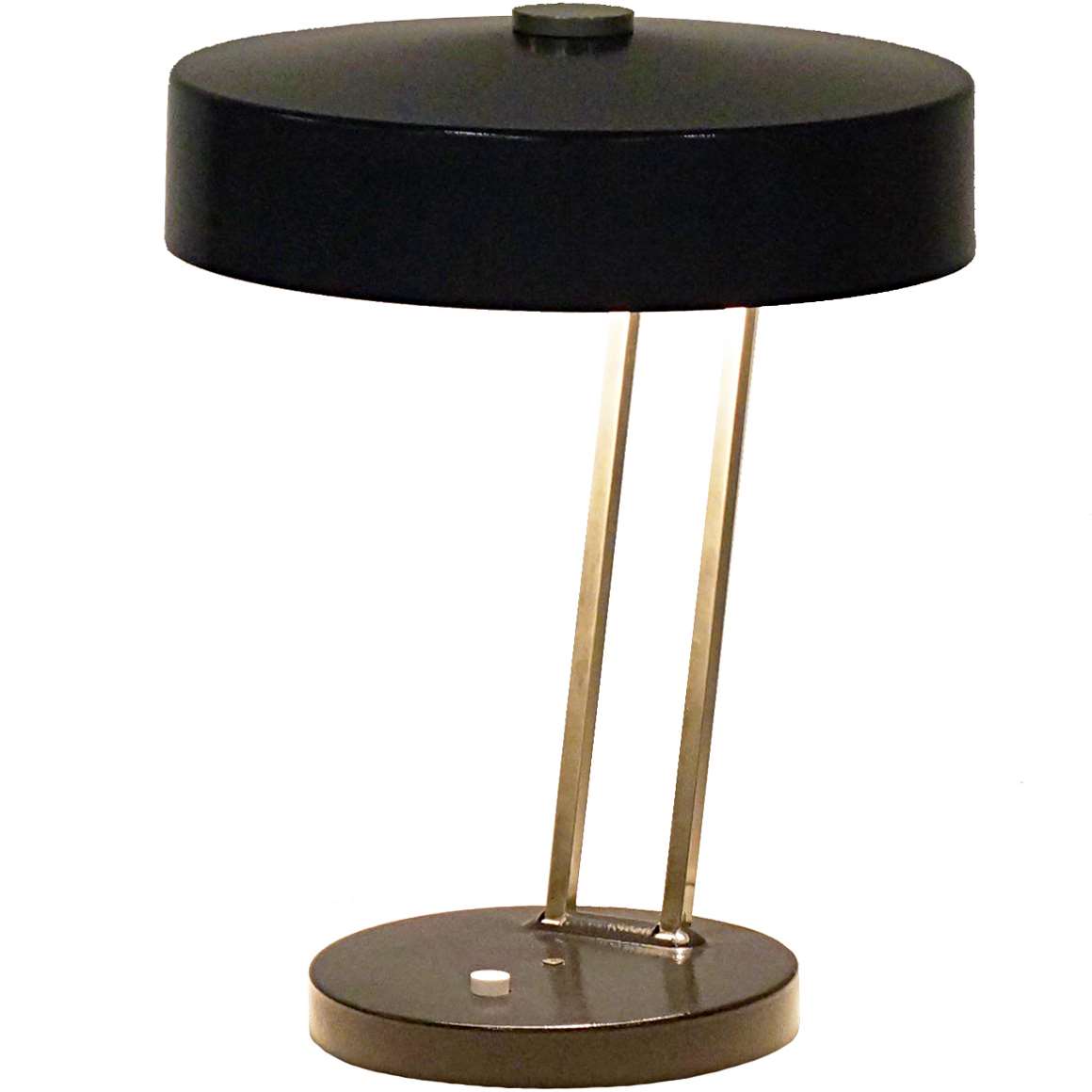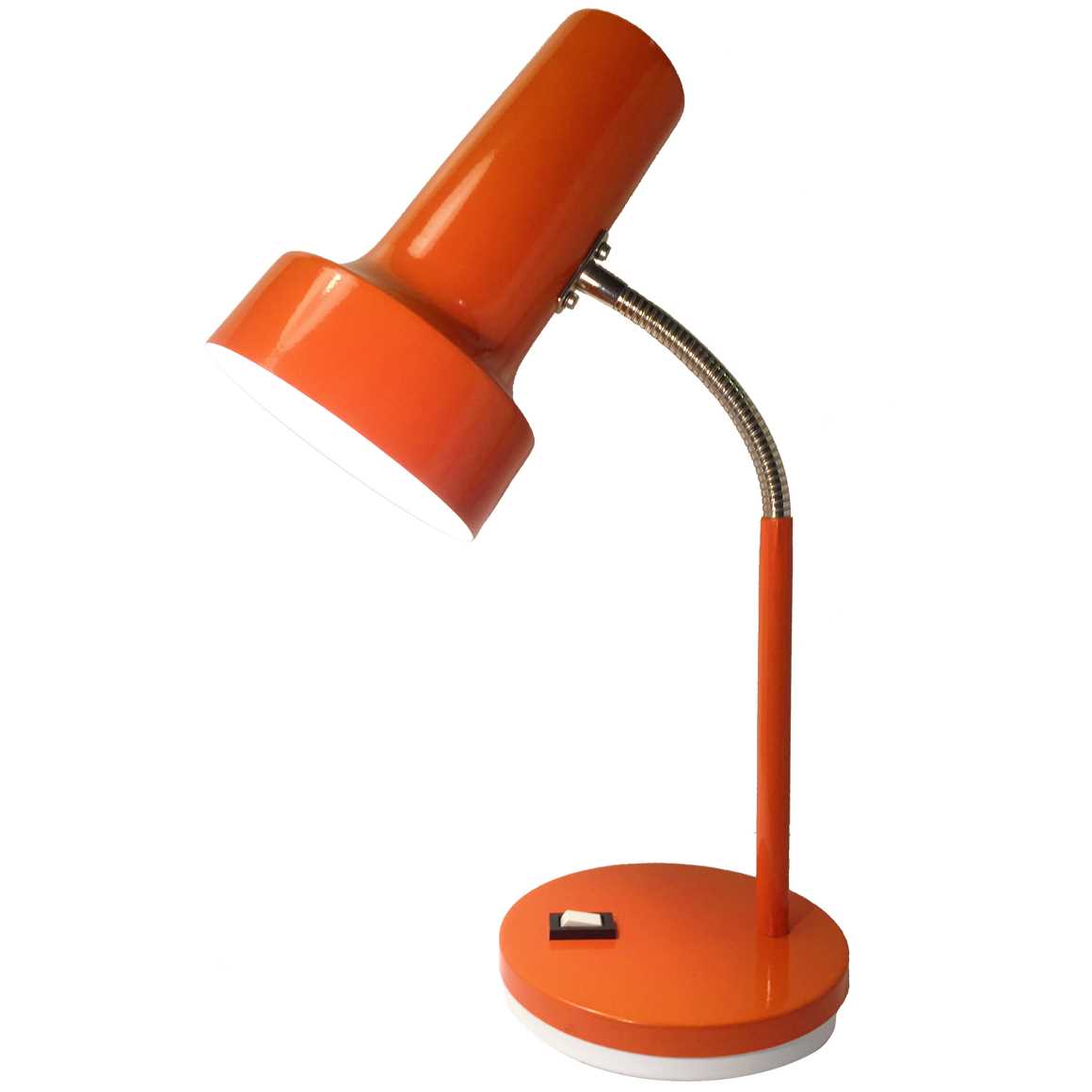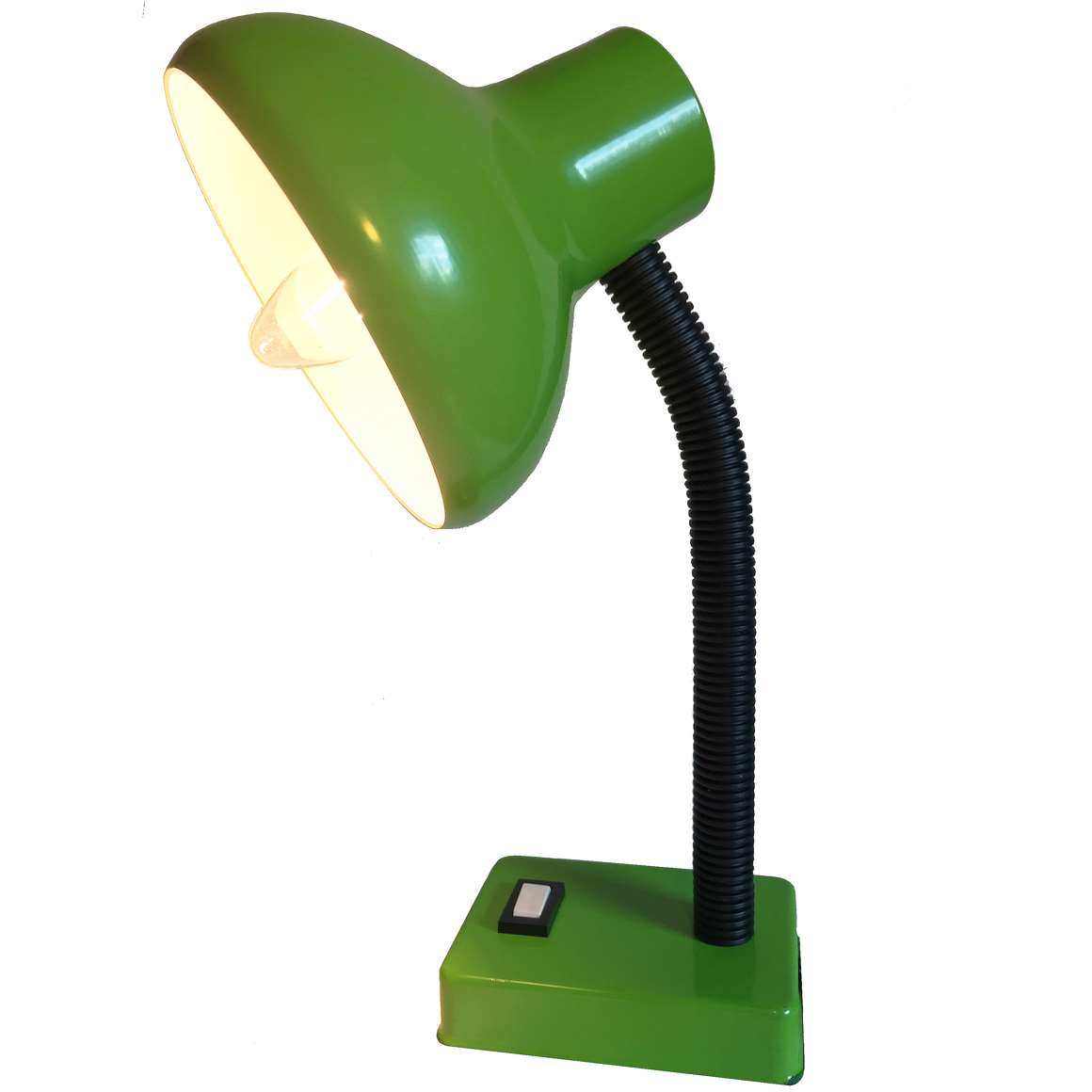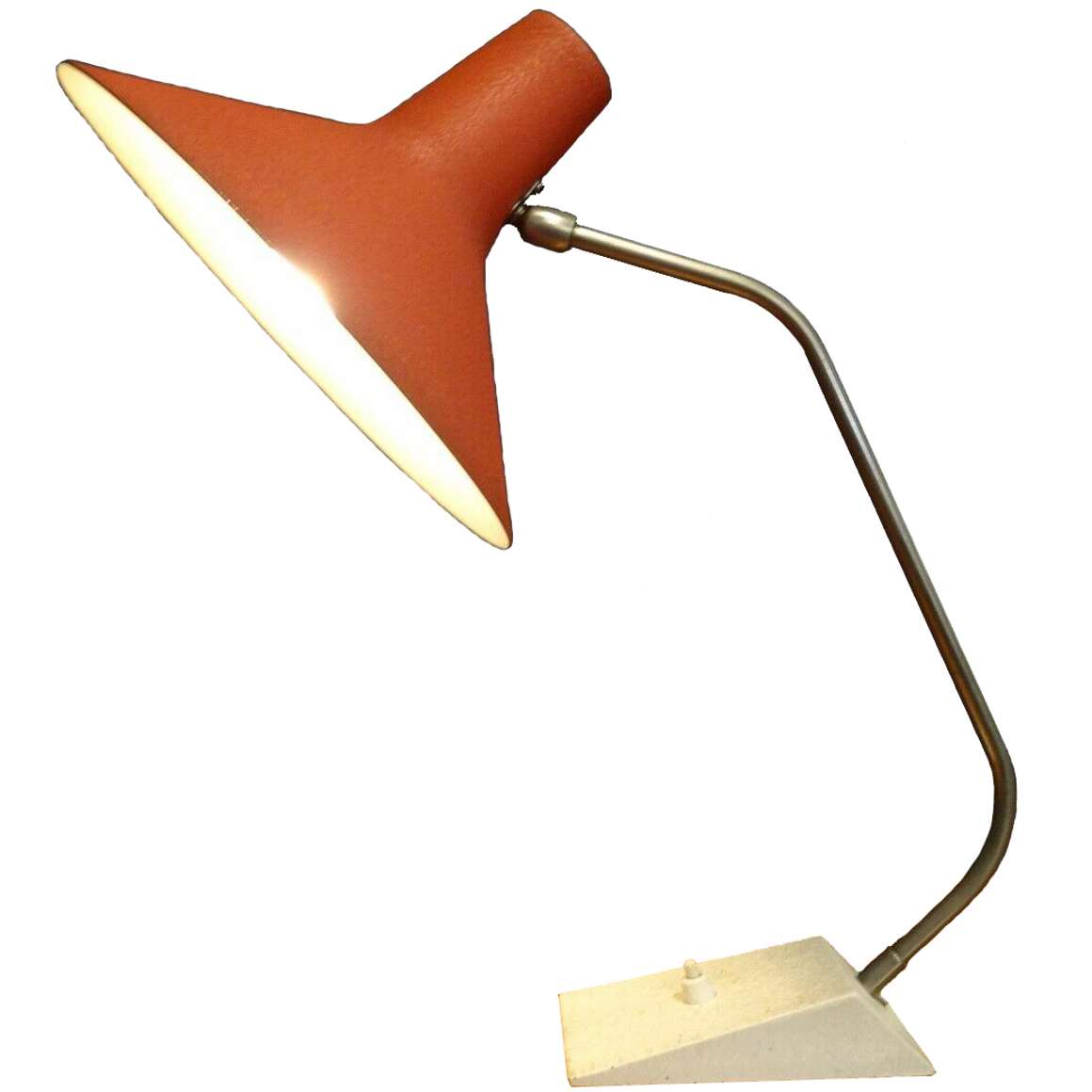1950s Diabolo Scissor Wall Lamp
Materials: Brass wall mount and parts. Vanilla-cream painted brass scissor slats. Brass pleated curved rod. Vanilla-cream painted aluminium diabolo lampshade, painted white inside. Brass E27 socket.
Length stretched: 71 cm / 27.95”
Length folded: 27,5 cm / 10.82”
Lampshade: ∅ 12,5 cm / 4.92”
Wall Mount: 10 x 5 cm / 3.93 x 1.96”
Electricity: 1 bulb E27, 1 x 60 watt maximum, 110/220 volt.
Anytypeof light bulb canbeused, preferably a small one.
Period: 1950s, 1960s – Mid-Century Modern.
Designer: Karl Lang.
Manufacturer: SIS LICHT Gebr. Lang GmbH & Co., Schweinfurt, Germany.
Other versions: This 1950s diabolo scissor wall lamp exists in several colours and variations. It is model 105. Some wall lamps have different wall mounts. They also existsin a version witha gooseneckinsteadof a brassrod on the lampshade. Also produced as a clamp lamp. Lampshades exists with perforated stars. Also made with a pull cord switch or a switch on cord. The lampshade was also used for a table lamp.
Often attributed to Hala, The Netherlands. Others say ANVIA, The Netherlands. Some others say that it is a lamp made by the Italian Stilnovo company. But those are false assumptions. Sometimes you find this lamp with a paper SIS label on the inside of the lampshade, as you can see.
These scissor lamps were also sold by ERPEES, a brand by Pfäffle Leuchten, another German company, as you can see in the catalogue picture from 1964. In all probability this lamp was made by SIS LICHT.
SIS LICHT
SIS LICHT – Light Solutions was founded in 1924 by Erich Lang and his dad Karl Lang senior. They started a metal industry factory, that had it’s focus on lighting right from the start. The name SIS stands for Sirius Schweinfurt. Today, they are producing a wide range of industrial lighting. The company is led by Stefan Lang, the fourth generation to lead the family business.
Schweinfurt is a small town with a population of some 52.000 inhabitants (2016) in the northwest of Bavaria on the right bank of the Main River. Schweinfurt is known for its metal industry. Schweinfurt is one of the fastest growing cities in Germany and one of the most dynamic cities in Europe in terms of development opportunities.
Pfäffle Leuchten
In 1909 Robert Pfäffle founded an office for electrical engineering and wholesale for electrical consumer goods in Villingen-Schwenningen, Germany. The town is near the Austrian border on the eastern edge of the Black Forest.
After 1949, the company was continued in the form of a limited partnership. The “Robert Pfäffle KG electrical and lighting equipment factory” mainly produced table and bedside lamps, wall and mirror lights under the “Erpees ” brand, as well as universal tube lamps, ceiling and floor lamps.
After the insolvency proceedings were opened in 1984, the cancellation took place in the commercial register in 1986.
The most well known lamp and the biggest success for the company is a desk lamp with a digital clock and alarm from the 70’s, the Chronolux, a Knox design. The lamp was produced in many variations and for a long time.
Diabolo
Diabolo is the name given to the shape of the lampshade. The diabolo lampshades were very popular in the 1950s. You can find several examples on Vintageinfo.
The diabolo, some yo-yo, has its origin in China. It’s a double-coned bobbin that can be twirled, tossed, and caught on a string secured by two sticks, one held in each hand. The first diabolo’s were made of bamboo and they made some whistling sound.
In the eighteenth century, the diabolo became known in England and France. The term “diabolo” was made up by French engineer Gustave Phillippart, who developed the modern diabolo in the early twentieth century and he was re-released. Since then, he has been widespread.
Links (external links open in a new window)
The website of SIS LIGHT Solutions
The city of Schweinfurt – Wikipedia
Official website of the city of Schweinfurt
Vintageinfo
Many thanks to Claes for the catalogue picture and the help.
